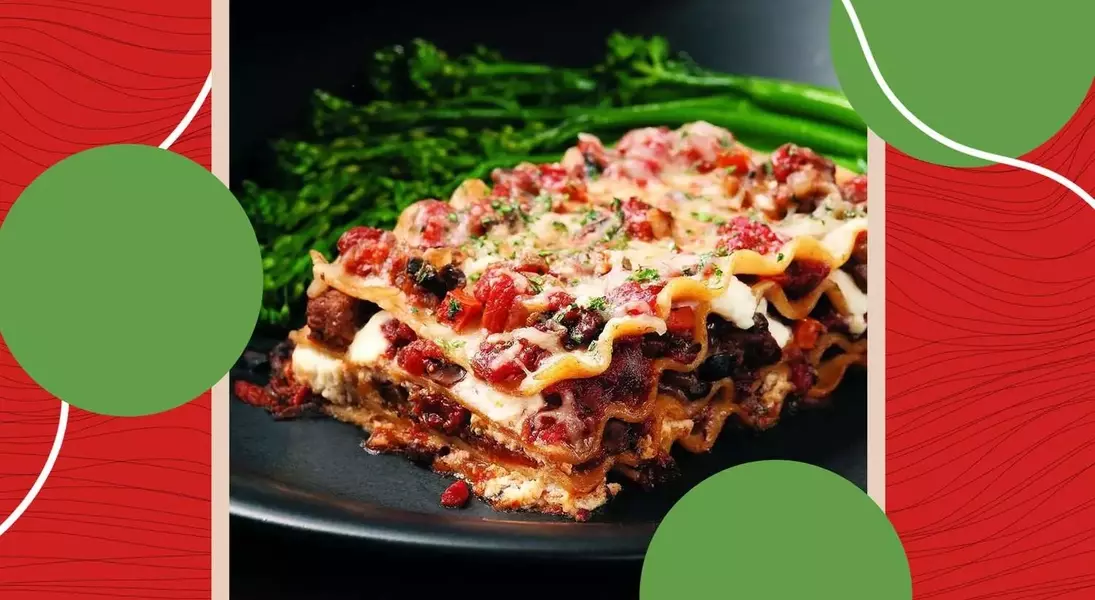
Lasagna, a cherished comfort food, brings immense joy, particularly during the colder months. Its delightful combination of cheese, noodles, and sauce makes it a crowd-pleaser and a perfect dish for entertaining or preparing in advance for convenient leftovers. However, crafting a truly exceptional lasagna requires more than just assembling ingredients; it demands an understanding of proper layering techniques, as emphasized by leading culinary experts.
Mastering the Layers: Insights from Culinary Professionals
Culinary authorities agree that the foundation of a superior lasagna rests in its construction. Chef Ashish Alfred, known from "Bar Rescue," highlights the importance of treating each layer with precision, ensuring a harmonious balance of sauce, cheese, and pasta. This meticulous approach guarantees that every portion offers a consistent and cohesive flavor profile, avoiding dry or overly saturated spots. Similarly, Ben Dodaro, the executive chef at Maria and Enzo's Hideaway in Orlando, Florida, stresses that uniform layers are essential for maintaining the dish's pasta-centric character. He suggests spreading fillings thinly and evenly to ensure that each bite encompasses all the delicious components, preventing any single ingredient from dominating the palate.
The emphasis on careful layering underscores why lasagna is revered as the ultimate comfort food. Jessica Randhawa, founder of The Forked Spoon, beautifully describes lasagna as "layers of coziness," brought to life by creamy ricotta, melted cheese, and tender pasta. Sarah Hill, a recipe developer at Real Food With Sarah, views lasagna as a "labor-of-love dish" that generously repays the effort invested in its preparation. Given the hands-on nature of creating this dish, perfecting the layers is paramount to achieving an even distribution of flavor and texture in every savory forkful. Just as one seeks comfort from a perfectly arranged blanket, a well-layered lasagna provides unparalleled culinary satisfaction.
For those aspiring to create consistently flawless lasagna, chefs offer several invaluable tips. Joe Isidori of Arthur & Sons in New York City recommends a two-stage baking process: after the initial bake, apply weight to the lasagna, refrigerate it overnight to set, then reheat it in a low oven for 45 to 60 minutes. This method compacts the layers, yielding a perfect texture and flavor. Isidori also advocates for fresh lasagna noodles, though he notes that if using dried, no-bake varieties, ample sauce is crucial for proper hydration. Conversely, Sarah Hill advises using less sauce with pre-boiled noodles, especially when incorporating high-moisture vegetables like spinach or zucchini, to prevent a watery outcome. Her preferred layering sequence involves a thin sauce base, followed by noodles, a light meat sauce, béchamel, and a touch of cheese, repeating these delicate applications to ensure an even bake and a balanced bite. Finally, Toni Elkhouri, owner of Cedars Cafe in Melbourne, Florida, insists on letting the lasagna rest for 20 to 30 minutes after baking. This crucial resting period allows the layers to set firmly, preventing them from sliding apart when sliced, thereby ensuring a visually appealing and structurally sound dish.
Ultimately, whether filled with robust meat sauces, fresh vegetables, or a simple blend of cheese and sauce, the enduring appeal of lasagna lies in its carefully constructed layers. The uniform distribution of ingredients is key to achieving a balanced taste and satisfying texture in every bite. This meticulous layering process, combined with precise sauce management and a post-baking resting period, elevates lasagna from a mere casserole to a culinary masterpiece. As Elkhouri eloquently states, treating lasagna as a craft rather than a routine dish transforms it into something truly extraordinary, embodying warmth and the comforting essence of home.
